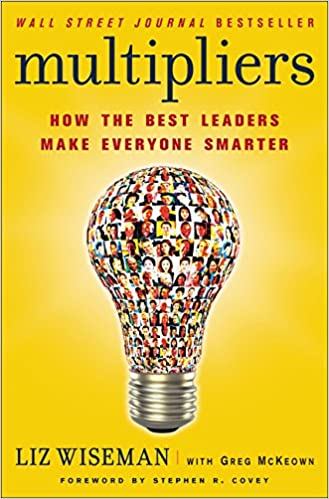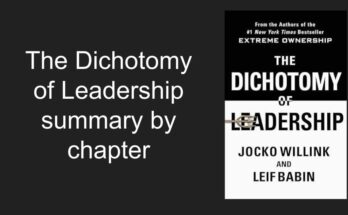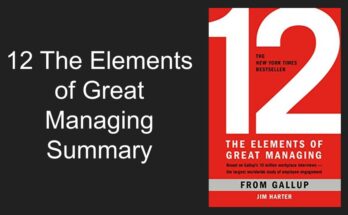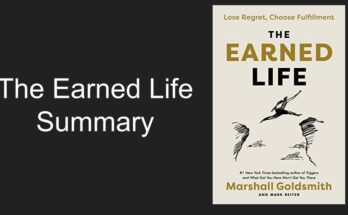In the Multipliers book summary, we will discuss two types of leaders, the first leader is genius, and another leader is a genius maker.
Remember the leader with whom you feel secure and confident that you perform at your best, while you may also work under a leader who makes you feel unimportant.
Multipliers – How the best leaders make everyone smarter by Liz Wiseman and Greg McKeown- is a book about two types of leaders they have researched. One is Diminisher, and another is Multipliers.
Authors researched over 150 leaders from different sectors and have developed five disciplines that distinguish diminishers and multipliers.
What are the key takeaways from the Multipliers book summary?
Why should you read this book?
What is the multiplier effect?
What is the logic of multiplication?
What are the five multiplier disciplines?
Why should you read this book?
We have all experienced working with two types of leaders, the diminisher who kills your ideas and the multiplier who builds ideas on your intelligence, allowing you to grow.
Multipliers book is about five disciplines identified by authors on which diminishers and multipliers are evaluated.
This book can also be your guide to become multipliers or help leaders become talent magnets, liberators, challengers, debate makers, and investors.
Multipliers is a must-read for Talent management professionals, leaders at any level, and new managers.
What is the multiplier effect?
Multipliers bring out the best ideas intelligence and can take advantage of the organization’s collective intelligence. They may not be the smartest people in the room, but they can bring out the best from everyone.
On the other hand, there are diminishers who are too engrossed in their intelligence that they stifle the growth of other team members and cannot utilize their full potential.
Everyone has experience working with these two types of people. What type of leader are you? Are you multiplier or diminisher?
What is the logic of multiplication?
The logic of multiplication is the new logic adopted by organizations to utilize their resources better.
It states that organizations can achieve growth by using the capabilities of existing resources, not just by adding more resources and aiming for linear growth.
To get most of the logic of multiplication, leaders believe in
- Most people in organizations are underutilized
- You need the right kind of leadership to leverage underutilized capabilities.
- So, intelligence and capabilities can be multiplied without any further investment.

How can you be a multiplier?
You can also become a multiplier. You just need to change your thinking; you can choose to think like a multiplier and act like one.
To become a multiplier, you need to see people’s underutilized capabilities and intelligence. Now your task is just to bring them together.
Here are a few points you need to keep in mind:
- First, multiplier leverages the resources available in the organization.
- Second, the multiplier increases intelligence in people or utilizes collective intelligence.
- Diminisher wastes resources of the organization and leaves capabilities on the table.
Organizations benefit immensely from multipliers, as they get almost twice the result from the same resources without any additional cost.
What are the five multiplier disciplines?
Here are the five disciplines of the multipliers.
- The Talent Magnet: Attract and optimize talent
- The Liberator: Require people’s best thinking
- The Challenger: Extend Challenges
- The Debate maker: Debate decisions with a team
- The Investor: Instill accountability in the organization.
Now let’s see these five disciplines of multipliers in detail.
The Talent Magnet
Multipliers can operate as a Talent Magnet, Not because they are good recruiters, but people flock around the multipliers to work with them.

People are aware that their talent will be utilized if they work with a Multiplier, and they will also learn from the leaders.
Multipliers can attract these talents and utilize them to their fullest potential.
On the other hand, diminishers act as an Empire Builder who hoards resources and never utilizes them to their potential. Instead, they just gather all these resources for their growth.
While resources of the diminisher feel underutilized and may start performing below their potential, in the worst cases, these people leave organizations faster than they joined.
The Magnet creates a cycle of attraction while the diminishers create a vicious cycle of decline.
How does the Talent Magnet create a cycle of attraction?
The cycle begins with a multiplier attracting top talent to his team, where the leader gets surrounded by these top performers.
Multipliers support these top performers and bring out their best performance. Due to best performance, these teams get recognized internally and externally.
These performers also get growth opportunities with the support of Multipliers. This makes multiplier “A leader to work with” for growth in the organization.
Once Multiplier is seen as “A leader to work with,” he attracts more talent, and the cycle continues.

The four practices of the talent magnet
Every multiplier follows the four practices of the talent magnet to run a cycle of attracting the best talent.
- Look for talent everywhere.
Talent magnets look for talent everywhere and are also open to experimenting with other functions.
Talent magnets keep their spectrum wide to search for the best talent knowing talent needs some discovery.
They build rapport with people around them and study their behaviors that can be useful talent for the organization.
- Find people’s native genius.
Native genius is the ability of people to do the task exponentially excellent, and they seem to do it naturally without putting any extra effort.
The talent magnets can find these native geniuses and utilize them to their advantage.

To identify native genius, leaders can invest in 360-degree feedback on the behavior and performance of the top talent.
- Utilize people at their fullest
Once the talent magnet has discovered the native genius in his team, he makes sure to utilize them at every possible opportunity. They create opportunities for teams to showcase their native geniuses.
Once they discover the task for true genius, they provide all support and make the team member stand out with performance.
- Remove the blockers
After identifying tasks for true genius, the talent magnet provided support and resources and removed the roadblocks to the performance of team members.
The Liberator
As the name suggests, the Liberator gives out space to the team members to blossom and put out the best performance.
We have witnessed upfront or brutal leaders with feedback, which destroys team members’ confidence, and they may not open up or perform at their best.
The liberator creates an environment where leaders can share feedback without being destructive, and the team performs best as it is the free environment.
As the liberator, Multipliers create a stress-free environment, and the team controls performance.
Diminisher goes by power tactics and creates an environment of stress and insecurity.
Here are the three practices of liberator:
- Create Space
The liberator creates space for everyone to contribute and share their capabilities for a common goal.
This space is safe for every team member where they feel stress-free to contribute or share feedback without worrying about anything.
- Demand people’s best work
As a manager multiplier, always know if someone is performing below the level to their potential.
The liberator gently pushes people to give their best work or perform at their full potential and performance limits.
- Generate Rapid learning cycles
The liberator allows people to make mistakes and ask them to learn from them.
While people have free space to contribute and make mistakes, they perform at their best.
The liberator encourages people to take a risk and always have their back for learning from mistakes.
The Challenger
The Diminishers limit the organization’s growth with their know-it-all attitude. On the other hand, diminishers feel that they know everything and solve every problem.
In this scenario, Team members get stuck with what the leader is thinking and executing it. No new idea or innovation comes from the team as they get busy executing the whims of the diminisher.
This way, the diminisher puts a perpetual limit on the growth of the team and the organization as a whole.
On the other hand, Multipliers know one leader can’t know everything. So he uses the team’s collective intelligence by challenging them with new tasks, assignments, and initiatives.
The multipliers do not limit themselves with their knowledge. Instead, they look for opportunities for organizations to grow and learn new things in the process.
The Three practices of the challenger
The research found the following three practices of the challenger to gain most of the team’s collective intelligence.
- Seed the Opportunity
Multipliers do not give all answers. Instead, they guide the team in the right direction and provide enough information on which team can make all discoveries.
Multipliers do not dictate the path or plan of action. They just seed the opportunity, and it is left upon the team to think, plan and execute.
- Lay down a challenge
Once the multipliers seeded the opportunity, the next step is to lay down a challenge for the team and organization.
This challenge makes the team stretch to achieve the goal, while multipliers provide support and resources needed.
Multipliers create an exciting challenge, creating tension, and the team feels the pressure of delivering.
- Generate Belief
After seeding the opportunity and laying down challenges for the organization, the next task is to generate belief.
Multipliers generate the belief in the organization that the impossible is actually possible, and a stretch challenge can be achieved.
To achieve the stretch challenge, the organization must be able to see that it is doable and take action.
The Debate maker
We have known the leader who listens to only selected people in his team, the diminisher. They rely on the view of only a few advisors in the team.
Let us take an example of the hiring process. The diminisher allows others to conduct interviews but makes hiring decisions based on advisors’ references. As a result, he keeps growing an army of followers.
And when the high-stakes decisions are to be made, diminishers tend to take decisions on their own and ask a team to execute.
On the other hand, Multipliers encourages every team member to discuss and debate the problem.
The multiplier will listen to all team members regardless of their seniority or role in the organization.
Three practices of the debate maker.
As a debate maker, multipliers have the following three practices to make the most out of the team.
- Frame the issue
The debate maker introduces the issue correctly, asks the right questions, and prepares it before the debate even starts.
The multipliers frame the issue so that every organization member can understand it and ask the question that leads to the solution.
- Spark the debate
Multipliers create a safe environment for everyone to speak up and contribute to the debate.
They make all participants contribute with rigor and enthusiasm.
- Drive sound decisions
Multipliers debate with the clear objective of solving the problem and making a decision. The debate maker keeps all team members discussing the common goal.
They make decisions based on the debate, its findings, and its rationale later communicated in the organization.
The Investor
Multipliers invest in the people by giving them the autonomy, resources, and support needed to get most of their intelligence.
They distribute the ownership of tasks to the team and have their back whenever needed.
Three practices of the Investor.
- Define Ownership
Based on people’s intelligence and capabilities, investors assign ownership to them.
- Invest resources
The investor provides knowledge, support, and resources needed to perform the task, and we can consider it an investment of resources.
- Hold people accountable.
Once ownership is defined and resources are invested, the final task for the leader is to keep people accountable for the results.
Who should read this book?
In Multipliers book summary, I have tried to summarize all the book’s key points.
I recommend every first-time manager to read this book.
If you like The Multipliers book summary you will like some others mentioned below.


